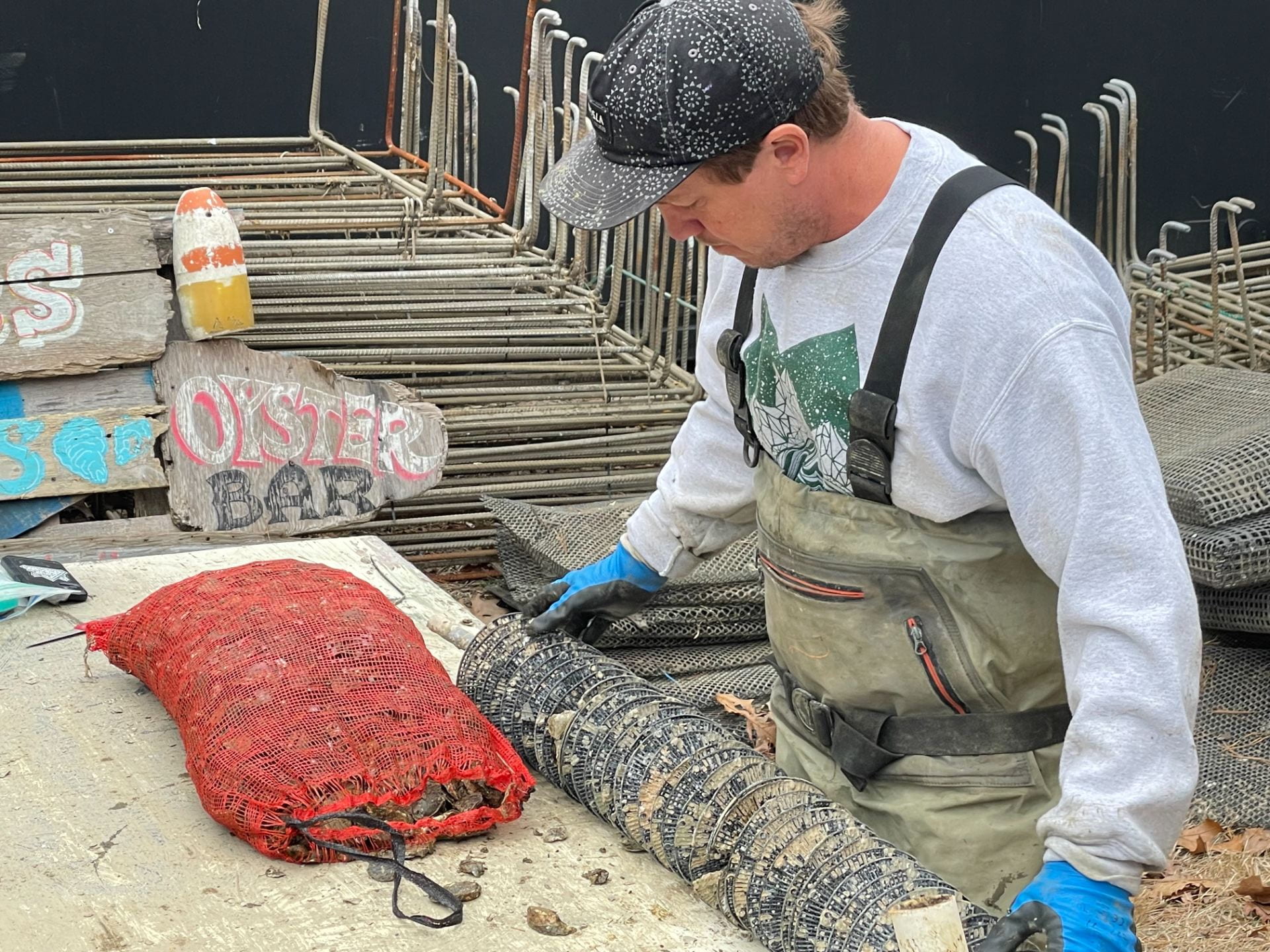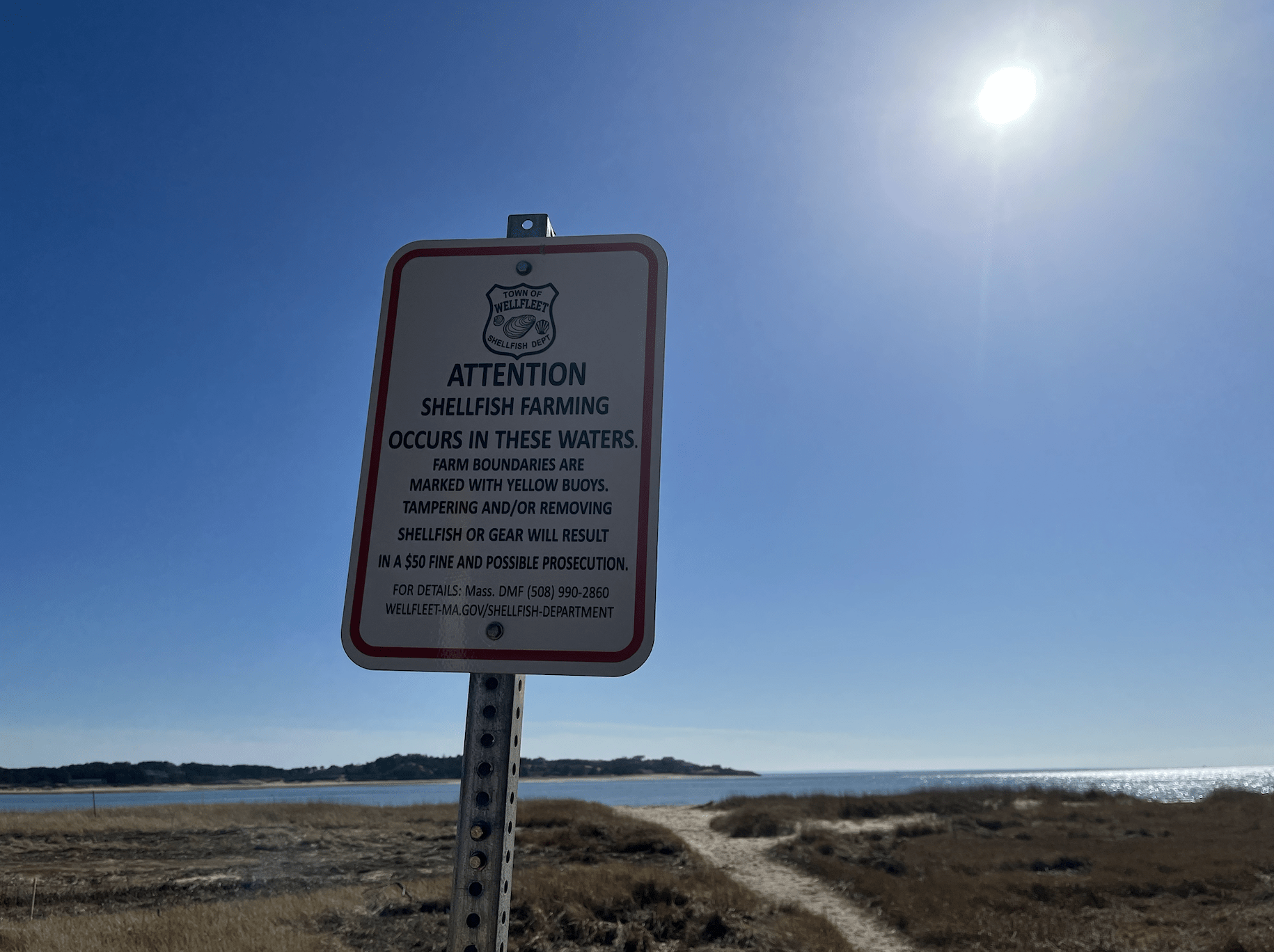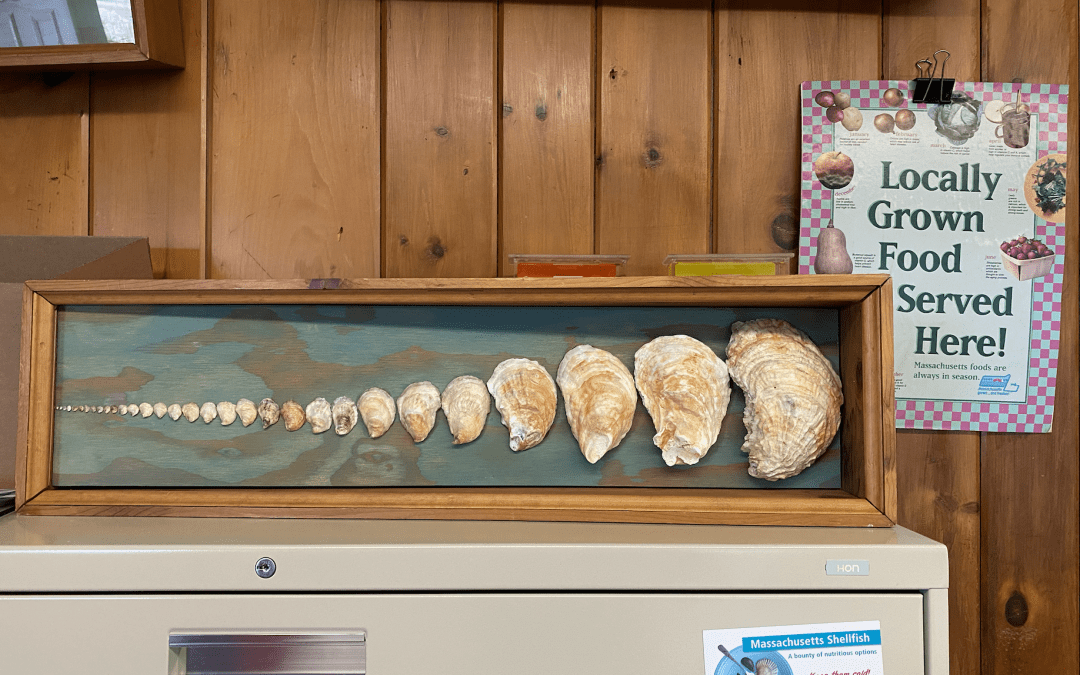This blog post was written by Danielle Schwartz.
This week, the crew regrouped after five days of filming on the Cape. With production wrapping this Friday, we are now starting to consider our story.
So, why does a humble little shellfish cause a global frenzy? Its exterior is not necessarily remarkable, but like much of the Atlantic, it has adopted a weathered appearance in the constant churning of the waves. There is something almost primal about the oyster- about the way we eat them raw, scraping through the sand and algae to uncover a prize to be cracked open and devoured. About their structural integrity and how they lay the foundation for the rest of the biological community. About the culture they foster and how it connects us to the ocean and its whims.

Andy Jacob of Wellfleet tells the crew about life as an oyster farmer.
Oysters are bivalves, part of the phylum Mollusca, which is only second to the arthropods (think spiders and insects) in the sheer number of species. The Mollusca include subgroups ranging in species from squids to slugs and everything in between.
As invertebrates, we are already talking about incredibly old species lineages. These species came into existence before there was such a thing as a spinal cord, or even a spine for that matter. We can date this taxon back to the Cambrian Explosion over 530 million years ago, the great emergence of species from the primordial ooze that surrounded our planet. However, the first real evidence of an oyster that we have found thus far is around 252 million years old, during the Triassic Period.
The Triassic Period dates back prior to the golden age of dinosaurs. Most life still remained in the ocean, and the early ancestors of modern lizards and turtles roamed the earth. Through hundreds of millions of years of evolution, the ancient lineage now yields the species that you can find at nearly any raw bar.
So maybe it’s the sheer ancientness and the knowledge that this was a food source for our ancestors that causes the frenzy- that they are both linked with the fabulous feasts of the Greeks and Romans as well as the poor man’s prohibition room. Or maybe it’s that the oyster, at its core, is a perfect microcosm of human interaction with the planet. Like the tide that the oyster so relies on, there is a constant ebb and flow between the farmers, consumers, and their products. Its quality, safety, yearly yields- any factor you can think of- is both a matter of best practice and serendipity.
The health of the water and the greater ecosystem is what makes an oyster delicious. Much like random acts of nature and the randomness that is evolution, farmers don’t have total control over what happens to their oysters. But what they all could agree upon is that at the end of the day, you get out what you put in.

A sign notifies beachgoers of shellfish farming occurring in the water near Jim O’Connell’s farm.
The oyster’s journey through time inspires us to push forward into editing and watch our story organically appear. Hopefully, in doing so, we can find our place in that story.
References
Bunje, P. (2003). The Mollusca Sea slugs, squid, snails, and scallops. UCMP Berkeley. Retrieved March 23, 2022, from https://ucmp.berkeley.edu/taxa/inverts/mollusca/mollusca.php
The Cambrian Explosion – Understanding Evolution. Understanding Evolution – Your one-stop source for information on evolution. (2021, May 21). Retrieved March 23, 2022, from https://evolution.berkeley.edu/the-arthropod-story/meet-the-cambrian-critters/the-cambrian-explosion/
Hautmann, M., Ware, D., & Bucher, H. (2017). Geologically oldest oysters were epizoans on early Triassic ammonoids. Journal of Molluscan Studies, 83(3), 253–260. https://doi.org/10.1093/mollus/eyx018

